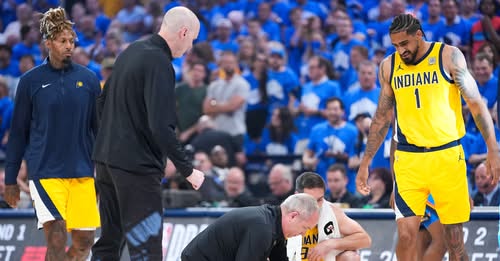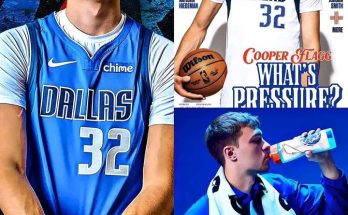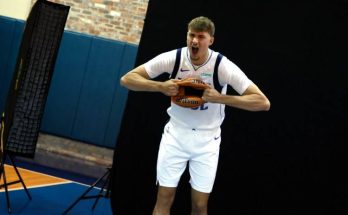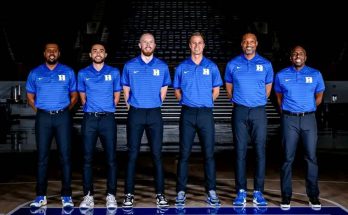Indiana Pacers star point guard Tyrese Haliburton admitted that he is taking small steps forward in his recovery from an Achilles injury, and for fans of the team, this is both reassuring and nerve-wracking at the same time. Anytime a player of Haliburton’s caliber suffers an Achilles injury, the conversation immediately shifts from what the team can accomplish in the present to what the timeline will look like for the future. The Pacers know that their entire offensive identity is built around Haliburton’s creativity, playmaking, and ability to orchestrate one of the most fast-paced and dynamic attacks in the NBA. Losing him to such a serious injury has been a devastating blow, but his admission that there is progress, even if it is slow, gives hope that a return is possible and that it may not be too far away.
For the Pacers, Haliburton’s injury came at a time when the team was starting to establish itself as a legitimate force in the Eastern Conference. With a roster featuring a strong blend of youth and veterans, Indiana was making strides toward becoming a playoff contender. Much of that progress, however, rested on the shoulders of Haliburton, whose vision and unselfish play have made him the centerpiece of everything the Pacers want to do offensively. Without him, Indiana has struggled to replicate the same flow and tempo. The Achilles injury took away not only his scoring and passing but also his leadership and calming presence on the floor. His acknowledgment that recovery is happening, even if gradual, is a critical step for both him and the franchise.
Recovering from an Achilles injury is one of the most difficult challenges in sports. It is not just about physical rehabilitation but also about the mental hurdles that come with it. Players often question whether they will ever regain their explosiveness, their lateral quickness, or their ability to move without hesitation. For a guard like Haliburton, who thrives on pace, change of direction, and the ability to push the ball in transition, the Achilles is especially vital. His game is predicated on bursts of speed, sudden stops, and quick decision-making that requires confidence in every movement. Taking small steps forward, as he describes, signals that he is not rushing the process. Instead, he is focusing on building a solid foundation so that when he does return, he will be able to perform at the same high level that made him an All-Star.
There is also the matter of expectation. Haliburton is not just any player; he is the face of the franchise. The Pacers traded for him with the vision of building a team that could compete for years to come. In just a short time, he has validated that decision, proving to be one of the most promising point guards in the league. His court vision is elite, his shooting continues to improve, and his leadership is unmistakable. The Achilles injury may have slowed his momentum, but it has not diminished the faith that the Pacers have in him. His willingness to share updates on his recovery demonstrates not only transparency but also an understanding of the role he plays in keeping fans connected to the team’s long-term goals.
The Pacers’ medical staff has undoubtedly mapped out a detailed plan for his recovery. Achilles injuries can take anywhere from nine months to a year for a full recovery, sometimes even longer. Each stage is monitored carefully, from regaining strength in the tendon to restoring flexibility, then gradually reintroducing explosive movements. Haliburton taking small steps forward means he is likely past the initial stage of immobilization and rest and is now focused on strengthening and controlled activity. Fans would love nothing more than to see him sprinting or dunking again, but this phase is about patience and precision. Any setback could extend the timeline, and that is why he is being deliberate in how he describes the process.
While Haliburton recovers, the Pacers are faced with the challenge of maintaining competitiveness. The team has other talented players, but no one replicates his impact. His absence has forced others to step into larger roles, which could have long-term benefits once he returns. Players like Bennedict Mathurin and Andrew Nembhard are gaining valuable experience as ball handlers and decision-makers, while Myles Turner has had to shoulder more responsibility as a focal point of the offense. These growing pains could pay dividends in the future, giving Indiana a deeper rotation that has already been tested under pressure. Still, it is clear that Haliburton is the engine, and the team’s ceiling will always depend on his availability.
For Haliburton personally, this recovery is a defining moment in his career. Many great players have suffered Achilles injuries, and while some have returned to near their previous form, others have struggled to regain the same explosiveness. Kevin Durant, for example, tore his Achilles in 2019 and has returned as one of the league’s best players, but it required immense dedication and time. On the other hand, some players never fully recovered, as the injury is known to drastically alter athleticism. For Haliburton, the key will be maintaining confidence and trusting his body again. The mental side of recovery is often just as important as the physical. If he believes in the process and trusts his rehab work, he can return to being the star that Pacers fans know he is.
The Pacers organization has invested heavily in Haliburton, not only with their trade to acquire him but also in positioning him as the centerpiece of their future. They understand that rushing him back too quickly could jeopardize not only this season but also his long-term career. That is why the messaging around “small steps forward” is important. It tempers expectations while also providing reassurance. Fans may want to circle a date on the calendar for his return, but the reality is that every Achilles injury is unique. Progress is measured in milestones—walking without discomfort, jogging lightly, jumping, and eventually playing five-on-five. Each stage must be completed before the next begins.
For Haliburton, this time away from the court also allows him to grow in other ways. He can still be a vocal leader from the sidelines, offering guidance to teammates and maintaining his presence in the locker room. Injuries can often deepen a player’s understanding of the game, as they are forced to watch from a different perspective. When he returns, he may very well have an even greater appreciation for the details of the game, which could make him an even more effective floor general. His basketball IQ has always been a strength, and adding this perspective could enhance it further.
The fans in Indiana have rallied around him, offering support and encouragement throughout his recovery. For a franchise that has experienced its share of ups and downs over the years, Haliburton represents hope. He is young, talented, and charismatic, a player who can connect with the community while leading the team on the court. His honesty about the recovery process allows fans to share in the journey with him. They understand that setbacks are possible but also know that progress, no matter how small, is a step in the right direction.
Looking ahead, the Pacers must balance the present and the future. With Haliburton sidelined, expectations for deep playoff runs may need to be adjusted. However, the bigger picture remains the focus. Ensuring that he comes back healthy and fully capable of leading the team is far more important than pushing for short-term success. Indiana has a promising roster that can continue to develop, but Haliburton is the key piece that makes everything come together. If his recovery continues as he describes, there is reason to believe that brighter days are ahead.
It is also worth considering how this injury may change Haliburton’s game long-term. Some players return from Achilles injuries with adjustments to their style of play. He may rely more on his shooting, his craftiness, and his decision-making rather than pure speed. Fortunately, Haliburton’s skill set already lends itself well to this adaptation. He is an excellent passer with great vision, and his ability to control the tempo does not necessarily require elite explosiveness. If he continues to develop his three-point shooting and mid-range game, he can remain just as effective even if he loses a step physically.
The journey of recovery will be closely monitored by the team, the media, and the fans. Every update will be dissected, every appearance analyzed. But at the core, what matters most is that Haliburton himself feels confident and prepared when the time comes. His statement about small steps forward shows humility and patience. He is not making bold proclamations or promising a quick return. Instead, he is focusing on steady progress, which is exactly what the situation requires.
In the end, the Achilles injury is a significant obstacle, but it is not the end of the story. Tyrese Haliburton has already shown resilience in his career, rising to stardom quickly and establishing himself as one of the NBA’s brightest young talents. This setback is another chapter, one that will test his determination and perseverance. If he continues to take small steps forward, those steps will eventually lead back to the court, where he can once again orchestrate the Pacers’ offense and remind the league why he is such a special player. Indiana’s future still runs through him, and while the road to recovery may be long, the destination is worth every step.



